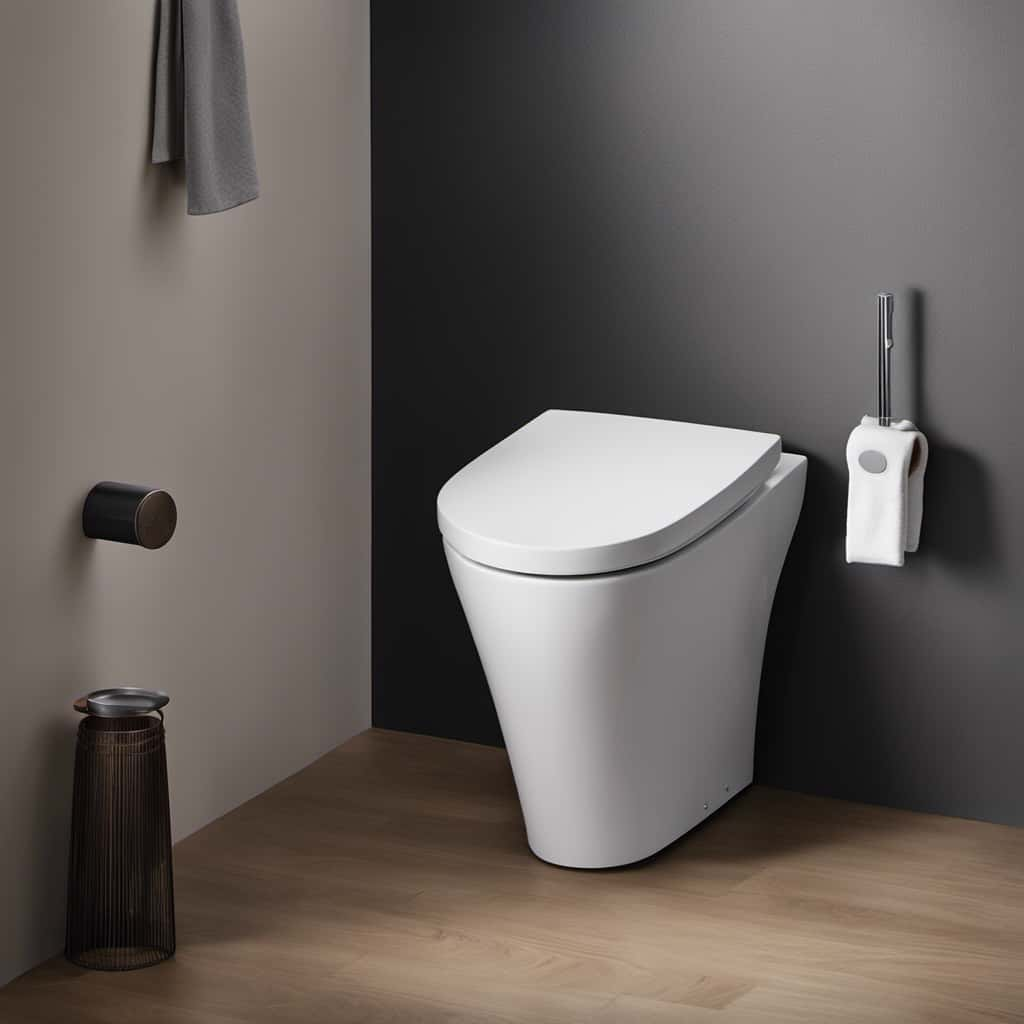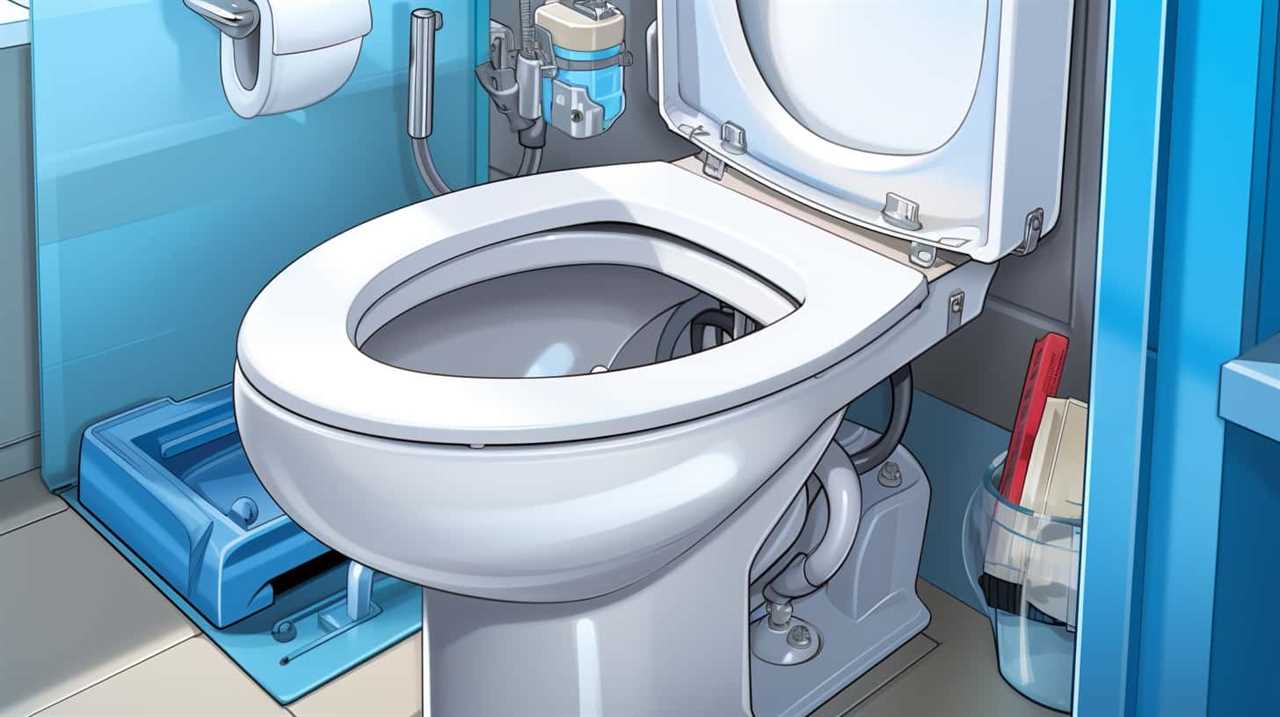Envision a world in which each time we flushed, it mystically eliminated our concerns. Yet, have you ever pondered the fate of all that toilet tissue after it vanishes into the plumbing?
Join us on a journey as we delve into the hidden depths of our sewage system, exploring the intricate processes that transform our waste into something remarkable.
From the moment we press that flush button to the final transformation into biosolids, prepare to uncover the wonders of where toilet paper truly goes when we flush it.
Key Takeaways
- Toilet paper is propelled into the sewer system when the flush button is pressed.
- The sewer system transports the waste and toilet paper to the treatment plant.
- Microorganisms in the wastewater treatment process break down toilet paper and prevent the accumulation of solid waste.
- The transformation process converts sludge into biosolids, a useful and safe product that can be reused in agriculture or land reclamation projects.
The Journey Begins: The Flush Button
When we press the flush button, all of the toilet paper in the bowl is propelled into the sewer system. Understanding the mechanics behind this process is crucial for those seeking mastery in water conservation.

Once the button is activated, a chain reaction is set in motion. The force of the water, released from the tank, creates a whirlpool effect that carries the toilet paper along with it. As the water level in the bowl rapidly decreases, gravity takes over, pulling the paper towards the drain.
The sewer system then takes over, transporting the waste and toilet paper to the treatment plant. This intricate system of pipes, pumps, and filters ensures that water is conserved and the waste is properly disposed of.
Into the Pipes: Navigating the Sewer System
Once the toilet paper is propelled into the sewer system, it begins its journey through a network of pipes and channels. The sewer system is a complex infrastructure designed to transport wastewater and solid waste from homes and businesses to treatment plants. Regular sewer system maintenance is crucial to ensure the efficient flow of wastewater and prevent blockages and backups that can lead to environmental contamination.
The sewer system is made up of various components, including gravity sewer lines, force mains, and pump stations. Gravity sewer lines rely on the natural downward flow of wastewater, while force mains use pumps to transport wastewater uphill. Pump stations play a vital role in maintaining the flow by pumping wastewater through the system.

Proper maintenance of the sewer system involves regular inspections, cleaning, and repairs. This includes removing debris, sediment, and grease buildup that can accumulate in the pipes over time. By maintaining the sewer system, we can minimize the environmental impact and ensure the safe and efficient transport of wastewater to treatment plants.
Transition: Now that we understand how the sewer system operates, let’s explore the wonders of the wastewater treatment process at the treatment plant.
Treatment Plant Wonders: The Wastewater Treatment Process
After navigating through the sewer system, the toilet paper finds itself at the treatment plant, where the wonders of the wastewater treatment process begin.
- Environmental impact: Wastewater treatment plays a crucial role in protecting the environment by removing harmful pollutants from the water before it’s released back into rivers, lakes, or oceans.
- Water conservation: Wastewater treatment also contributes to water reuse and conservation efforts. Through advanced treatment processes, treated wastewater can be reused for various purposes like irrigation, industrial processes, and even drinking water in some cases.
- Physical treatment: The wastewater undergoes a series of physical processes to remove large debris, such as screens and grit chambers, which trap solid particles and prevent damage to downstream equipment.
- Biological treatment: Next, microorganisms are introduced to break down organic matter through aeration tanks and biological filters. This helps remove dissolved pollutants and further purify the water.
The Role of Microorganisms: Breaking Down Toilet Paper
Now we delve into the role of microorganisms in the wastewater treatment process as they break down toilet paper. Microbial decomposition is the key to toilet paper breakdown in the wastewater treatment system. When toilet paper enters the wastewater, it becomes a food source for various microorganisms present in the wastewater treatment plant. These microorganisms, including bacteria and fungi, produce enzymes that break down the cellulose fibers in toilet paper into simpler compounds. This process, known as microbial digestion, is essential for the efficient removal of toilet paper from the wastewater.

The environmental impact of microbial digestion in wastewater treatment is significant. By breaking down toilet paper, microorganisms prevent the accumulation of solid waste in the treatment plant, reducing the risk of clogging and blockages. Additionally, the breakdown of toilet paper by microorganisms contributes to the overall reduction of organic matter in the wastewater, leading to cleaner effluent that can be safely discharged into receiving bodies of water.
This microbial digestion process plays a crucial role in ensuring the sustainability and effectiveness of wastewater treatment systems.
From Sludge to Soil: the Transformation Into Biosolids
To complete the transformation from sludge to soil, the wastewater treatment process utilizes various methods. These methods are designed to not only remove harmful substances and pathogens from the sludge but also to convert it into a useful and safe product called biosolids.
Here are the key steps involved in the transformation process:

- Thickening: The sludge is concentrated and thickened to reduce its volume, making it easier to handle.
- Digestion: Biological processes, such as anaerobic digestion, are used to break down organic matter in the sludge, further reducing its volume and stabilizing it.
- Dewatering: Excess water is removed from the sludge to produce a solid material that can be easily transported and used.
- Stabilization: The biosolids undergo further treatment, such as lime stabilization or composting, to eliminate any remaining pathogens and reduce odor.
The resulting biosolids have significant reuse potential as a nutrient-rich soil amendment for agriculture or land reclamation projects. This transformation process not only converts waste into a valuable resource but also minimizes the environmental impact of sludge disposal.
Frequently Asked Questions
How Does Toilet Paper Impact the Environment?
Toilet paper impacts the environment through its manufacturing process and disposal. We can reduce this impact by exploring alternatives to toilet paper and adopting sustainable practices.
Can Flushing Toilet Paper Cause Plumbing Issues?
Flushing toilet paper can cause plumbing issues, which can be exacerbated during a toilet paper shortage. It is crucial to consider toilet paper alternatives to prevent clogs and maintain a functioning plumbing system.
Is It Safe to Flush Other Items Besides Toilet Paper?
Flushing non-toilet paper items can lead to severe plumbing issues. It is crucial to consider the consequences. Instead, explore alternative disposal options such as placing these items in a waste bin to avoid clogging and costly repairs.

How Long Does It Take for Toilet Paper to Break Down?
Toilet paper decomposition rate varies depending on factors like moisture and temperature. It typically takes several weeks to a few months to break down completely. However, its impact on the environment can be significant if not disposed of properly.
What Happens if There Is a Blockage in the Sewer System?
When there is a blockage in the sewer system, it can cause serious issues. To prevent blockages, regular sewer maintenance is necessary. It ensures that the flow of water and waste remains unimpeded.
Conclusion
In conclusion, the journey of toilet paper after flushing is a fascinating and intricate process. As it navigates through the sewer system and undergoes wastewater treatment, microorganisms play a crucial role in breaking it down.
Eventually, the transformed biosolids find their way back into the soil. But have you ever wondered, in this cycle of transformation and reuse, how many trees could be saved if we all switched to bidets?











